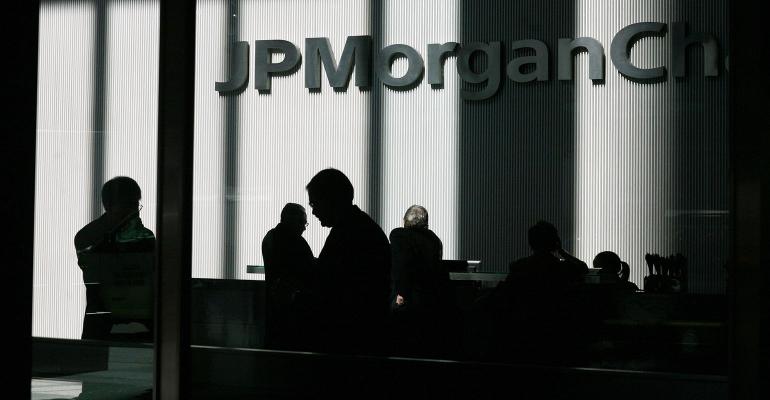(Bloomberg) -- JPMorgan has unseated itself for the title of largest actively managed exchange-traded fund in the $7 trillion arena.
A $101 million inflow on Monday boosted assets in the JPMorgan Equity Premium Income ETF (ticker JEPI) to $24.7 billion, data compiled by Bloomberg show. That influx finally vaulted JEPI past the $24.6 billion JPMorgan Ultra-Short Income ETF (JPST), which previously held the crown of biggest active ETF.
While both ETFs have benefited massively from the hunt-for-income that’s taken hold during the Federal Reserve’s aggressive campaign to cool inflation, the equity-focused JEPI has at last pulled ahead of fixed income-oriented JPST.
After a record-breaking 2022, JEPI — which invests in low-volatility stocks and employs an income-generating call-writing strategy — built upon that momentum, even as climbing bond yields offered competition. That should be seen as a win for stockpickers broadly, given that active management tends to be more popular in fixed-income, according to Bloomberg Intelligence.
“It’s a huge moment because fixed-income has always been where active dominates in ETFs,” Bloomberg Intelligence senior ETF analyst Eric Balchunas said. “This should come as some reassurance that it’s possible to have a hit product that’s active on the stock side.”
Beyond the two JPMorgan products, money has flooded into active ETFs this year at a record clip. Actively managed strategies have attracted more than 27% of the $115 billion worth of inflows into ETFs this year, even though active funds make up just about 6% of the $7 trillion market by assets.
Roughly $6.9 billion has flooded into JEPI this year, after last year’s $12.9 billion haul easily broke the previous $9.6 billion record for active ETF inflows, set by Cathie Wood’s Ark Innovation ETF (ARKK) in 2020. JEPI’s lone outflow this year was an $11 million exit on March 10, days after Silicon Valley Bank’s sudden collapse rocked the cross-asset landscape.
That off-the-charts demand meant it was only a matter of time before JEPI overtook JPST, which tracks investment-grade debt maturing in a year or less. While ultrashort duration bonds have been in high demand, the bulk of that cash has been aimed at money-market mutual funds instead of ETFs this year. JPST took in a record $5.6 billion in 2022, just $660 million has flowed into the ETF so far this year.
“Both of them still play a huge role in the investor portfolio,” Bryon Lake, JPMorgan Asset Management’s global head of ETF solutions, said on Bloomberg Television’s ETF IQ earlier this month. “Why are investors using active? It gives you the opportunity to outperform, it manages risk or it can drive an outcome. JPST and JEPI both tick all of those boxes, albeit in different ways. JEPI obviously is yielding above 9% right now, outperforming the S&P by about 13% last year.”
JEPI has climbed 3.2% on a total return basis so far this year, outpacing JPST’s 1.4% gain but falling behind the S&P 500’s more than 7% year-to-date rally. Thanks to its mix of holdings — the top weights in the portfolio are dividend-paying names such as AbbVie Inc., the Hershey Co. and Progressive Corp. — JEPI’s indicated yield currently clocks in at about 9.7%, versus 4.3% for JPST and about 1.5% for the $381 billion SPDR S&P 500 ETF Trust (SPY), which tracks the S&P 500.
While JEPI has dominated since launching in May 2020, it’s worth nothing that it set sail in the ideal environment, Balchunas said. The Fed’s tightening cycle has fueled turbulence across asset classes, unleashing demand for the type of steady payout stream that JEPI provides. Once the US central bank backs off, some of those flows will likely be diverted back into riskier assets, he said.
“This market is perfect for JEPI,” Balchunas said. “If the Fed were to pivot and lower rates, JEPI would definitely see some dropoff in inflows.”





